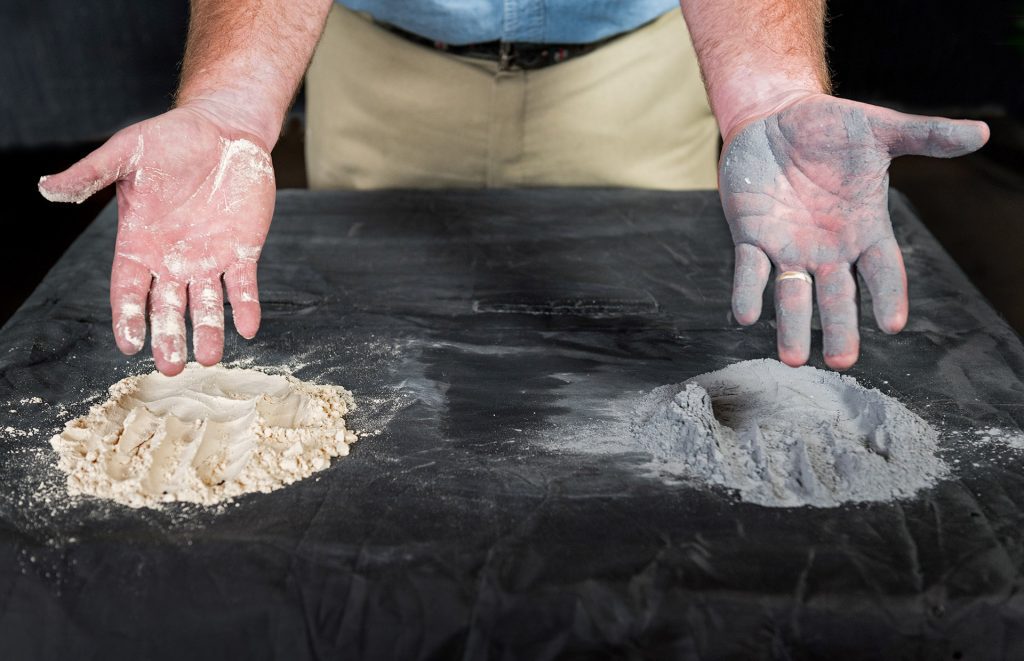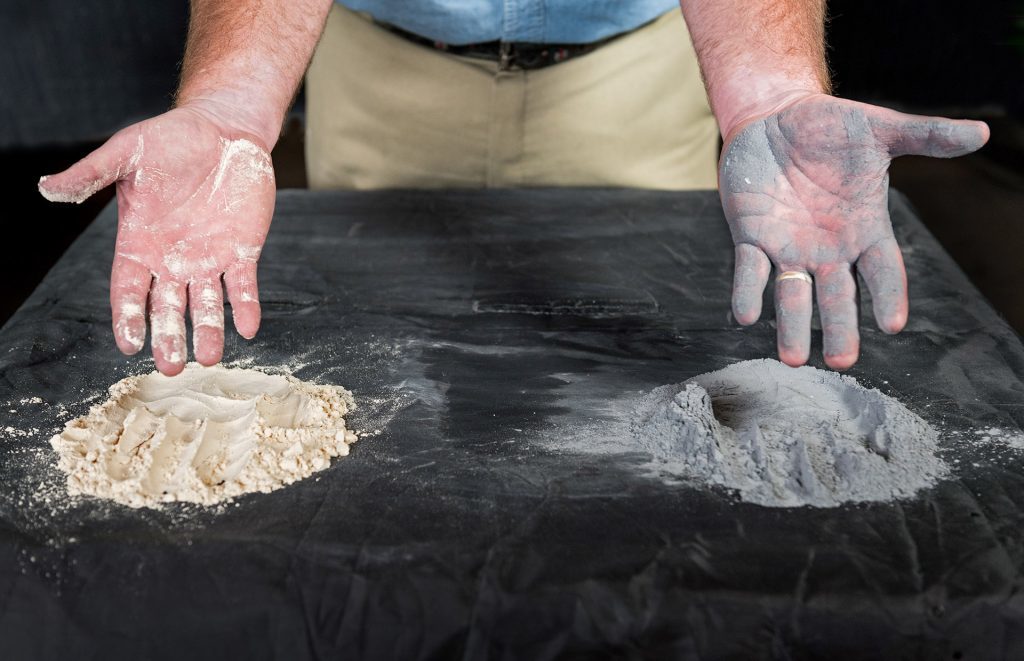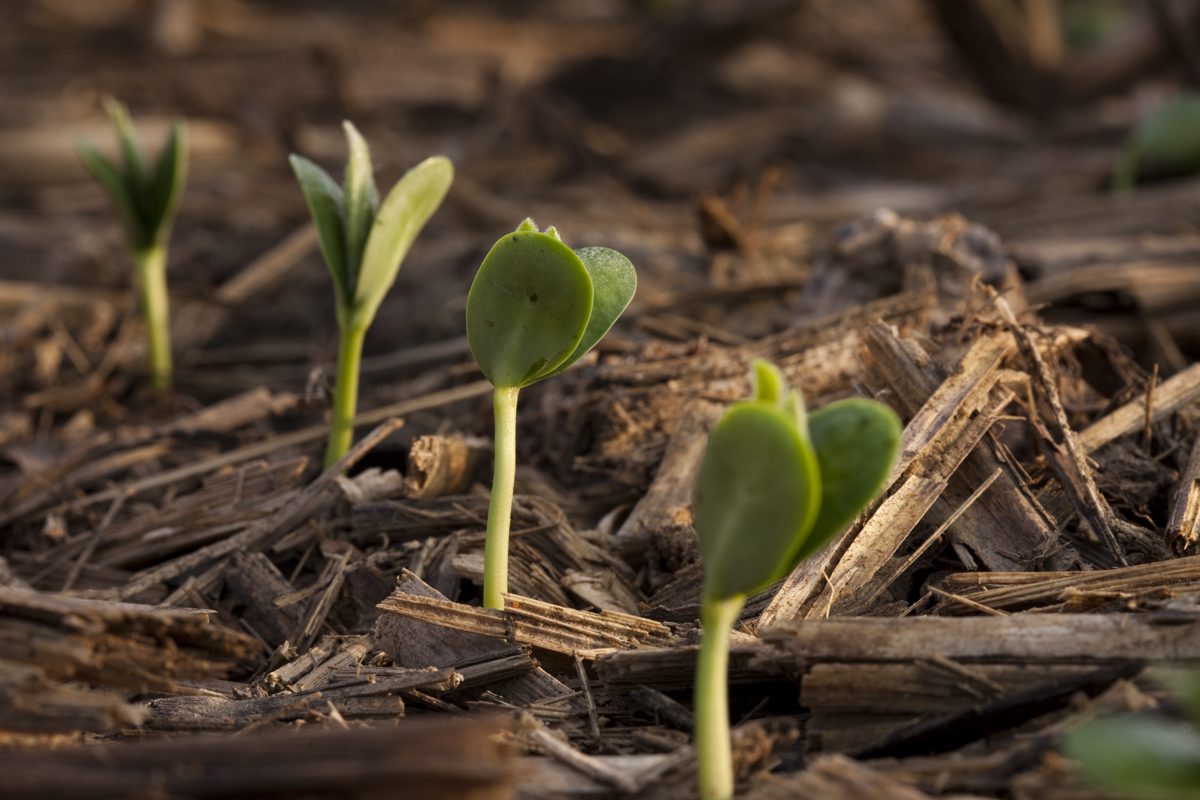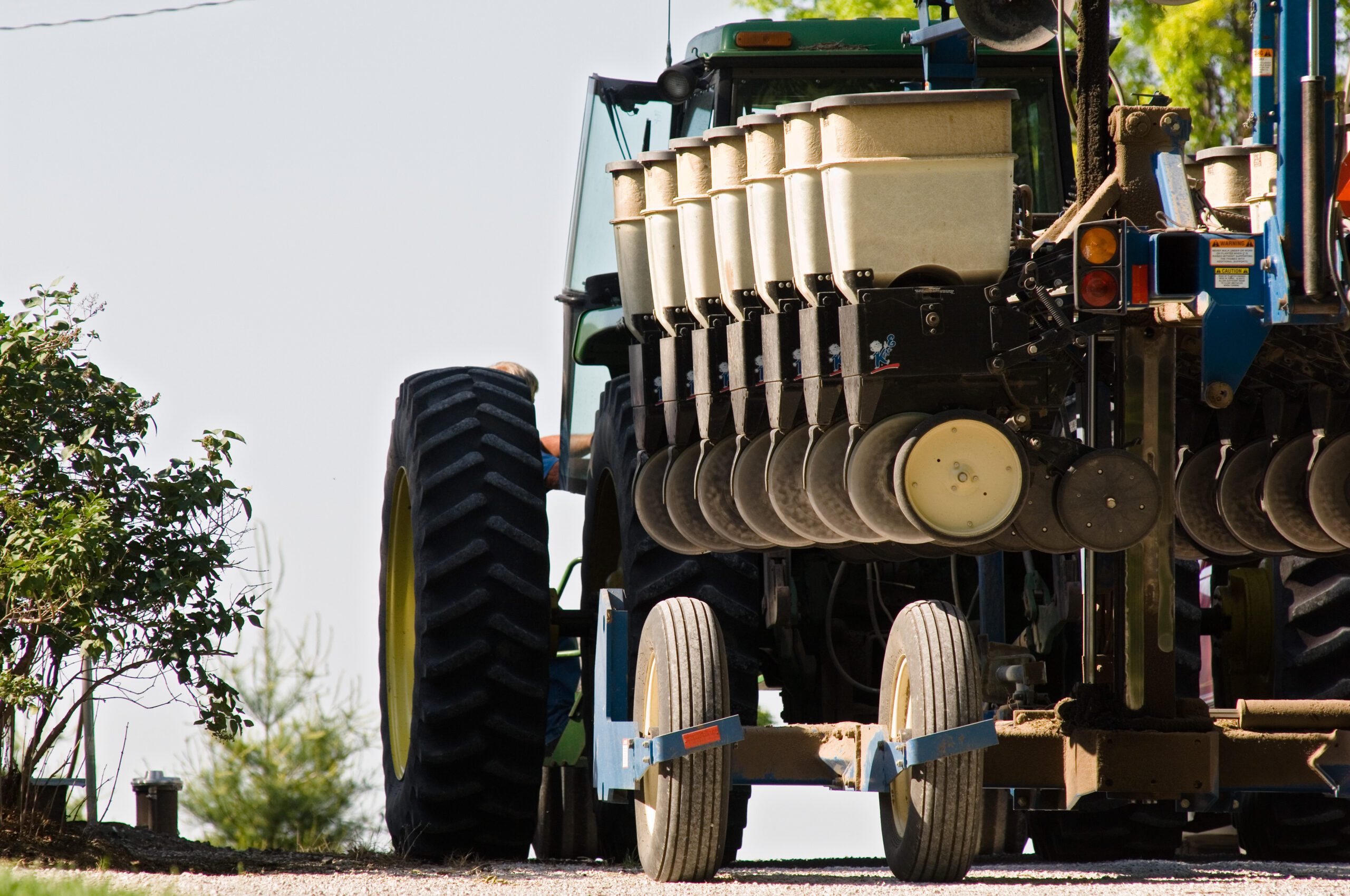New Seed Lubricant Brings Multiple Benefits to Farmers

By Kayla Weaver
Farmers are faced with a lot of decisions each spring. Deciding on a seed lubricant has typically come down to choosing between the dusty, dark graphite that can easily stain your hands and clothes or the powdery, white talc that could be dangerous if high amounts are inhaled. While both perform the necessary function, neither is a pleasure to work with.
In 2011, Dave Kloostra and Brian Tulley came together to form Low Mu Tech and put a serious effort into formulating an alternative. Their work led them to consider soy protein and after a few years of trials, they had a marketable product — Dust (patent pending).
“We wanted a product that was easy for farmers to accept, so we did analysis in the Mid-West, around St. Louis all the way down to the Delta trying to get it into different planters with different tillage practices to make sure it was a seamless fit for the farmers to transition from the graphite and talc products to our Dust product,” said Tulley.
The product was officially launched in early 2018 at Commodity Classic in Anaheim, California. This brought opportunity to have Dust used on acres stretching from Washington state and the Dakotas, through the Midwest, down to the Delta, and over to Virginia. Research trials were also put into motion at The Ohio State University, the University of Missouri and the University of Tennessee. This year they’re building the brand by setting up dealers and distributors in key parts of Illinois, Indiana, and Ohio as well as Iowa, Missouri, and North and South Dakota.
“Dust is not a hammered or a milled product — it’s manufactured to produce tiny round uniform particles, which is why it works so well. Dust is 20 times less abrasive than traditional graphite and talc, helping maintain seed treatment coatings,” Tulley explained.
Low Mu Tech’s Dust product is not only a healthier and cleaner product for farmers but has additional positive environmental benefits. With Dust being 100 percent soy protein, once it’s in the ground, it’s metabolized by microbes in the soil and leaves no trace after 28 days. Microbes are energized by the protein and encourages more above- and below-ground growth helping plants do better in the early growth stages.
“We’ve replaced a product that nobody likes using and it works just as well. It’s just a matter of showing how it works. With a new generation coming up in farming, they are questioning more and looking for better alternatives,” said Tulley. “We’re giving them the opportunity to use a product they’re growing on their farm, something they do quite well, and it has the potential to increase their revenue. If we can capture even 40 percent of the graphite and talc market, we would increase soybean usage by 2.5 million bushels of U.S. soybeans.”
Kloostra and Tulley hope to continue their partnership with the United Soybean Board, the national soybean checkoff, and state checkoffs to develop more products to benefit farmers. It’s worth noting that 50 percent of the money collected for the checkoff in Ohio goes to the United Soybean Board.
“We have several other projects in progress right now and are going to continue working with the United Soybean Board. We wouldn’t be where we are today without the partnership and help from checkoff dollars. Brian and I both grew up in agriculture and believe this is exactly the kind of thing they had in mind; these are checkoff dollars working hard on behalf of soybean farmers to advance soy products,” said Kloostra.
Farmers who are interested in using Dust this planting season are encouraged to make plans early as production will be based on interest. Visit Low Mu Tech’s website for more information.


